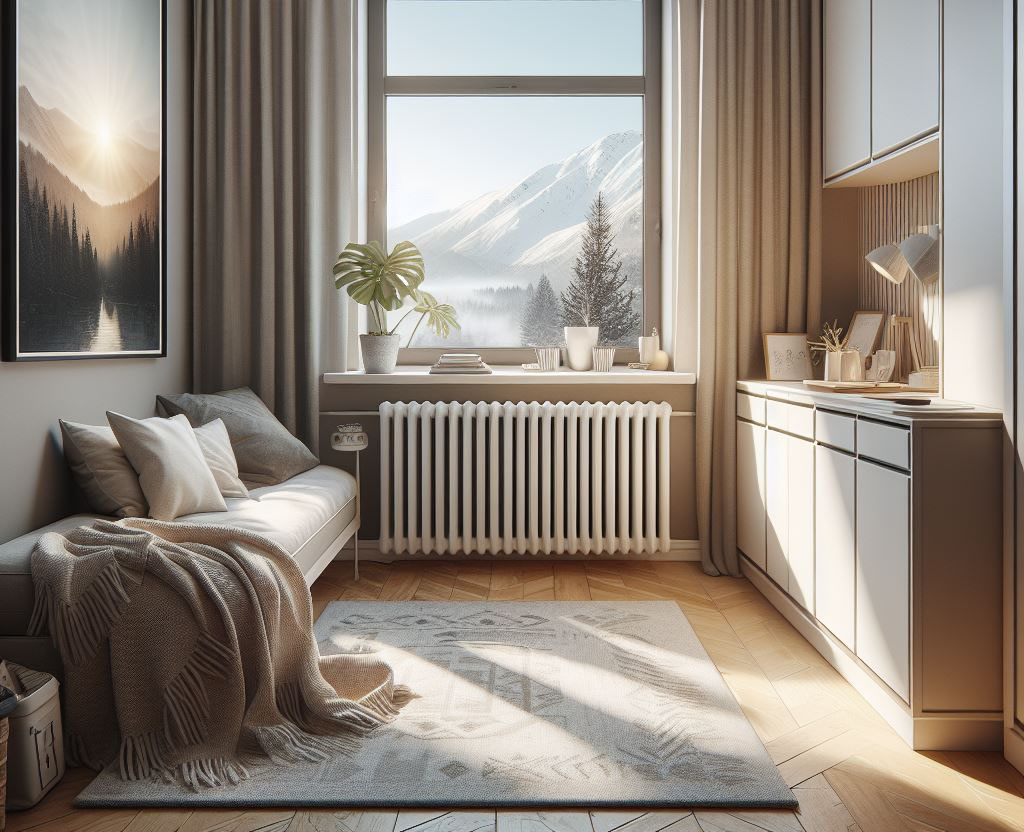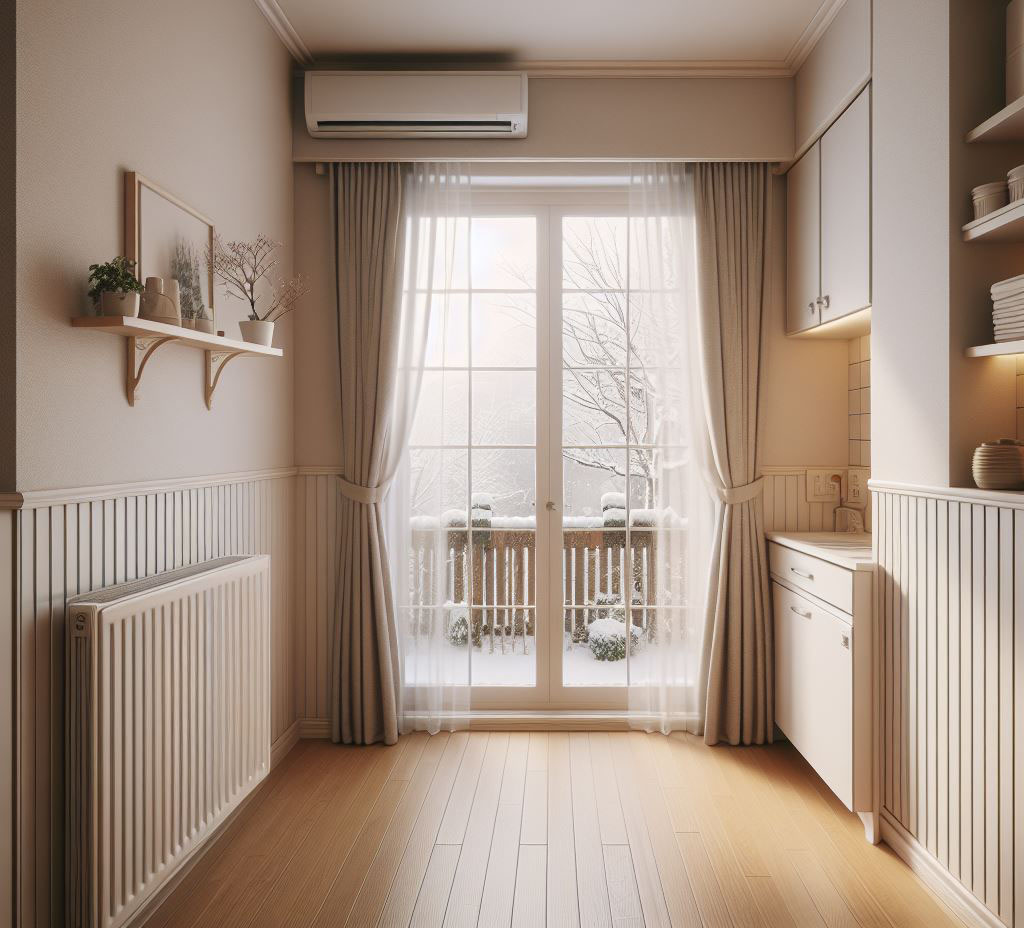Stepping into the realm of steam heating systems is like embracing a piece of history that seamlessly integrates into the modern home. From the ornate radiators in Victorian homes to the sleek units in contemporary apartments, steam heating has journeyed through time, adapting and proving its relevance in today’s construction landscape.
Why consider steam in an era brimming with cutting-edge heating technologies? The answer lies in its unpretentious efficiency. Steam heating is akin to an old, trusted friend – reliable, straightforward, and surprisingly adept at meeting modern energy standards. In the era of green building practices, steam heating holds its own with admirable grace.

Understanding Steam Heating
Understanding steam heating is to appreciate the simplicity of its mechanics. At its core, a steam heat boiler generates steam that travels through a network of pipes to radiators nestled in your living spaces. Here, the steam releases its heat and, in the process, condenses back into water, which returns to the boiler, ready for another cycle. It’s an elegant loop, characterized by its efficiency and simplicity.
Diving deeper, steam heating systems generally fall into two categories:
- One-Pipe Systems: Picture a two-way street where steam and condensed water share a single pipeline. Steam ascends, radiates warmth, then cools down, making its way back in the same pipe.
- Two-Pipe Systems: Here, we have a more sophisticated setup. Separate pipes are dedicated to the steam heading towards radiators and the returning condensed water. It’s a more organized flow, akin to a well-structured traffic system.
Benefits of Steam Heating Systems
Steam heating systems come with a suite of benefits that make them a compelling choice:
- Energy Efficiency: Steam packs a substantial amount of heat in a relatively low-energy package. It’s an efficient conductor of warmth, ensuring that your energy expenditures are kept in check.
- Eco-Friendly: With a minimal environmental footprint, steam heating systems use basic elements – water and heat. They avoid the complexities and environmental concerns associated with more modern refrigerants and chemicals.
- Durability and Reliability: Steam heating systems are workhorses. Their simplicity translates to fewer mechanical failures. A well-maintained system can last for decades, often outliving other household installations.
- Even Heat Distribution: Steam heating is remarkable for its ability to distribute heat uniformly throughout a space. No cold corners or overheated spots – it’s a consistent, gentle warmth reminiscent of a sunny day dispersing its rays evenly in a room.
In essence, embracing a steam heating system is to make a nod to a time-tested technology that has gracefully aged and adapted, offering a blend of historical charm and modern efficiency. It’s a choice that speaks of practicality, efficiency, and a touch of nostalgia, fitting both for those steeped in the building trade and homeowners looking to bring a piece of history into their modern living spaces.

Installation Essentials
In the intricate dance of installing a steam heating system, precision and foresight are your lead partners. It’s akin to setting the foundation of a house – every measurement, every decision, lays the groundwork for the system’s efficiency and longevity.
Key Considerations for Installation
- Accurate Measurements: The cornerstone of a well-functioning steam heating system is getting the dimensions spot-on. It’s about understanding the unique heating demands of your space. A boiler too small will leave you in the cold, while one too large unnecessarily inflates your energy bill.
- Tailoring to Your Home’s Layout: Like fitting a bespoke suit, customize your heating setup to the layout of your home. Consider the nuances of each room – window sizes, insulation quality, and sun exposure – to ensure a balanced and efficient heating experience.
- Pipe Sizing and Routing: The size and layout of your pipes are crucial. Opt for a diameter that balances steam delivery and pressure maintenance. Strategically route your pipes for the most direct and efficient path to each radiator.

Insulation and Sizing
- The Role of Insulation: Insulation in a steam heating system is much like a quality winter jacket – it keeps the warmth where it’s needed. Proper insulation ensures efficient heat retention, reducing overall energy consumption.
- Sizing Boilers and Radiators: Here, one seeks a perfect equilibrium. An oversized boiler is as impractical as an undersized one. The same goes for radiators. It’s a delicate balance that, when struck, optimizes both performance and energy use.
Professional Installation vs. DIY
- Weighing Your Options: The choice between DIY and professional installation boils down to skill level and complexity. If you’re well-versed in heating systems and their intricacies, a DIY approach can be rewarding and cost-effective. However, the complexity and potential risks often make professional installation the safer and more reliable choice.
Maintenance and Troubleshooting
Just as a garden thrives with regular care, so does a steam heating system with consistent maintenance. Neglect can lead to inefficiencies and breakdowns, especially in the heart of winter.
Routine Maintenance Tips
- Consistent Check-Ups: Regular maintenance is the lifeline of your heating system. It keeps the system running smoothly and wards off major repairs.
- Cleanliness is Key: Like any well-oiled machine, your heating system requires cleanliness for optimal operation. Regularly remove dust and debris from boilers and radiators to ensure unobstructed heat transfer.
- Lubrication of Moving Parts: Just as a car needs oil changes, your heating system benefits from the lubrication of its moving parts. This simple act can greatly enhance its efficiency and longevity.
Common Problems and Solutions
- Tackling Noisy Radiators: Often a sign of trapped air or steam, noisy radiators can usually be resolved by bleeding them, allowing any trapped air to escape.
- Addressing Uneven Heating: If you find some rooms warmer than others, inspect for blocked pipes or improperly pitched radiators. It’s about ensuring a balanced distribution of steam throughout the system.
- Knowing When to Call a Professional: For issues like water leaks or significant boiler noise, it’s prudent to enlist the expertise of a professional. Some problems require a trained eye and experienced hands.
Steam Heating System Upgrades
Upgrading a steam heating system is not dissimilar to restoring a classic car – it’s about enhancing efficiency while preserving its inherent charm.
Modern Advancements
- High-Efficiency Boilers: The latest in boiler technology offers greater efficiency and a reduced environmental impact. It’s an upgrade that pays dividends in both performance and sustainability.
- Upgraded Radiators and Valves: Modern radiators heat up more rapidly and offer improved control, akin to transitioning from analog to digital in terms of precision and convenience.
Retrofitting Old Systems
- Retrofitting an aged steam system can breathe new life into it, much like refurbishing a cherished heirloom to meet contemporary standards.
Smart Controls and Automation
- Incorporating smart thermostats and controls into your steam heating system introduces a level of convenience and efficiency once thought unattainable. It allows for precise temperature control from anywhere, transforming an old system into a modern marvel of home comfort.
Cost Analysis
In assessing the financials of installing a steam heating system, it’s crucial to consider both the short and long-term perspectives. It’s akin to investing in a quality tool that might have a higher upfront cost but pays off in durability and performance over time.
Initial Installation Cost vs. Long-Term Savings
- Upfront Costs: Initially, installing a steam heating system may seem like a significant investment. The process of setting up a boiler and laying out pipes demands both labor and materials, which can add up.
- Long-Term Benefits: However, the efficiency of steam heating systems translates into lower operational costs over time. Their ability to retain and transfer heat efficiently means less energy is needed to maintain a comfortable temperature in your home.
Comparison with Other Heating Methods
- Against Forced Air: While forced air systems may be less expensive to install, they often lead to higher energy bills due to heat loss through ducts.
- Against Electric Heating: Electric heating systems, though simpler to install, can significantly increase your electricity bills, especially in regions with colder climates.
Safety Considerations
Safety in operating steam heating systems is paramount. It’s about understanding the system’s intricacies and respecting its operational boundaries.
Safety Tips for Operating Steam Heaters
- Monitor Pressure Levels: Keeping an eye on your system’s pressure is crucial. Excessive pressure can lead to system failures, so regular checks are necessary.
- Inspect Valves and Joints: Ensure that all components of your steam heating system are in good working condition. Regular inspections can prevent leaks and other potential hazards.
Importance of Regular Inspections and Pressure Controls
Annual Inspections: Just like any significant home system, a steam heating system requires an annual check-up. A professional can assess the system’s condition, ensuring it operates safely and efficiently.
Environmental Impact
When considering the environmental impact of a steam heating system, it’s important to look at the broader picture of energy consumption and sustainability.
Steam Heating and Its Environmental Footprint
- Efficiency: Steam heating systems are efficient in their use of energy, primarily when they use natural gas, a relatively clean-burning fuel.
Comparison with Other Heating Systems
- Relative Eco-Friendliness: Compared to oil-fired systems, steam heating is a more environmentally conscious choice. It emits fewer pollutants and makes efficient use of its fuel source.
FAQ Section
Steam heating systems use steam to distribute heat, which requires higher temperatures. This can make them more efficient in heat transfer compared to hot water systems, which circulate heated water to radiators.
Yes, modern technology can be adapted to steam heating systems. Smart thermostats and controls can be configured to work with these systems, providing convenience and efficiency in managing home heating.
Indicators include unusual noises from the boiler or radiators, uneven heating across different areas, and visible leaks in the system. These signs suggest it’s time to consult a professional.
It’s advisable to have the system inspected and serviced annually, particularly before the onset of the colder months, to ensure it’s in optimal condition for efficient operation.
Certainly, steam heating can be a viable and efficient option for new constructions, offering reliability and compatibility with modern building designs and technologies.
